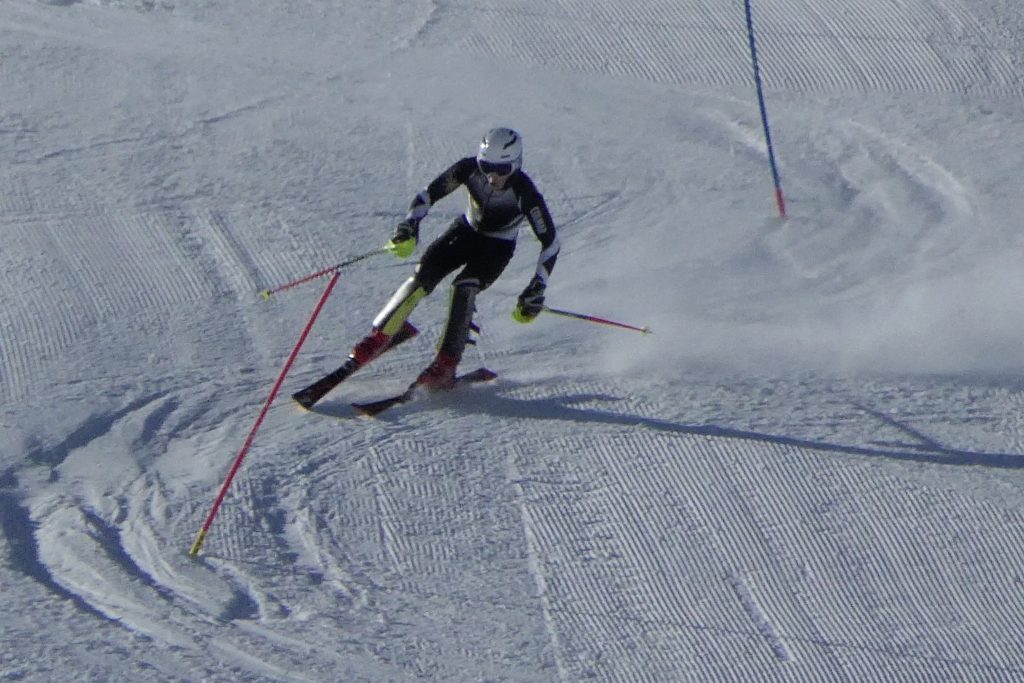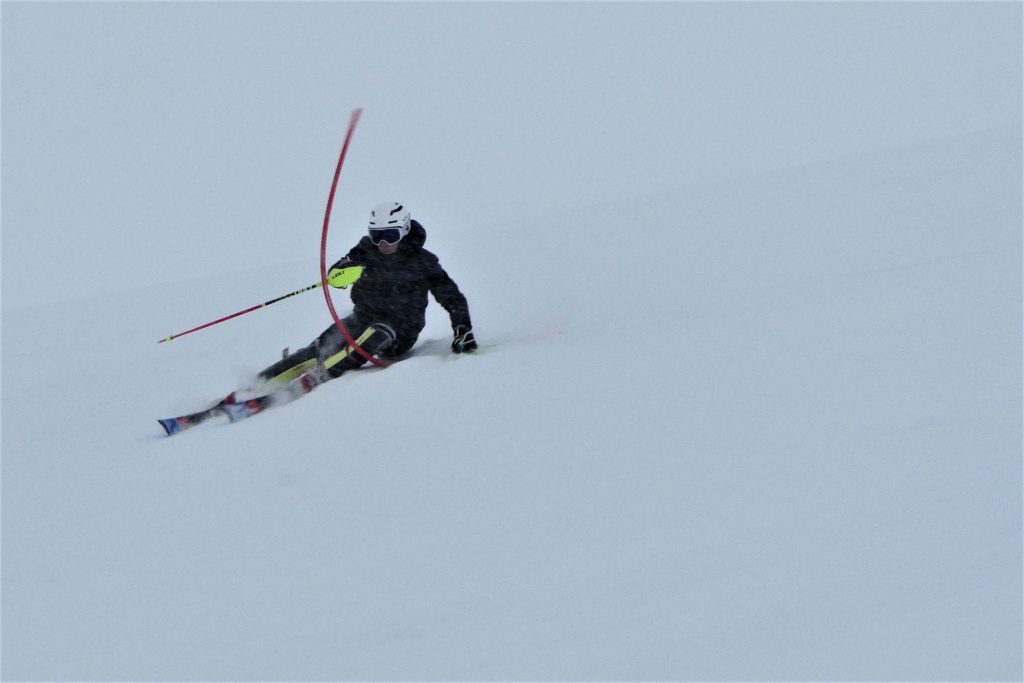Timing (Skating)
The fundamental timing of down/up movements in skiing is based on skating. Take a motorbike into a high speed turn and its centre of mass goes down into that turn then back up out of it. When you skate, walk, run you go down (centre of mass) and back up with each stride and likewise with each turn in skiing. All skis since the 1960s have been manufactured to work with this pressure cycle.
Everyone in the group tried skating straight downhill and managed to at least achieve the rhythm with the legs being more active. The dynamics (even just toppling into a turn) achieves the same motion pattern of the centre of mass.
End of turn Dynamics
The ski is designed to cut underneath your Centre of Mass trajectory and to lift you up. The lifting power becomes strongest when you are completing a turn and resisting gravity (instead of going with gravity at the start of the turn). This naturally makes the end of the turn help you “come up” – and good timing lets you use this to exit the turn – effectively coming up and over the downhill ski into “perpendicular ” with the slope. (There’s more on this in the fixed page on Dynamics)
Fronts of Skis
The turn transition is most effective if you come over the front of the downhill ski – in the same angle of attack as we have practised with the pivot when on the uphill ski. The video (above) of “leaning forward in the extreme” shows skiers who are just perpendicular to the hill and not really too far forward at all. Most people fail to use the fronts of the skis – yet that’s were the turning power is. Here’s a recent photo of Alex (racer) coming over the front of his downhill ski…

Carving
We used hip angulation to introduce carving. The fixed page “Chiskiing” explains the rational about how to safely angulate – avoiding the dangerous “face downhill with the upper body” trap. Angulation serves many purposes but for our introductory carving exercise it’s just about getting the skis more on edge without moving the centre of mass. Here’s a photo of Alex angulating when carving in action …

Pole Touch vs Pole Plant
When the ski is travelling forward across the slope it is supporting or lifting up your body and you have no need to stick your pole into the ground. The body crossing over the downhill ski can be helped by a gentle touch of the downhill pole (without arm movement involved) just for feedback. This is called a Pole touch.
The pivot – where the skis are slipping/swinging sideways and there is no froward motion across the slope is where a strong pole plant support is required – exactly as we have practised. Daniel was the only one to strongly use his pole when we tried to link pivot turn coming over the front of the downhill ski.
Emily: avoid staring at the ground/skis!
Focus on your body instead of other external distractions!
We used “Foot Froward” technique to tighten the turns (minimising hip rotation) – then worked on coming over the front of the downhill ski and linking the turns dynamically – eliminating the traverse between turns. The following video shows how this leg action not only tightens turns but integrates with skating at a racing level.

